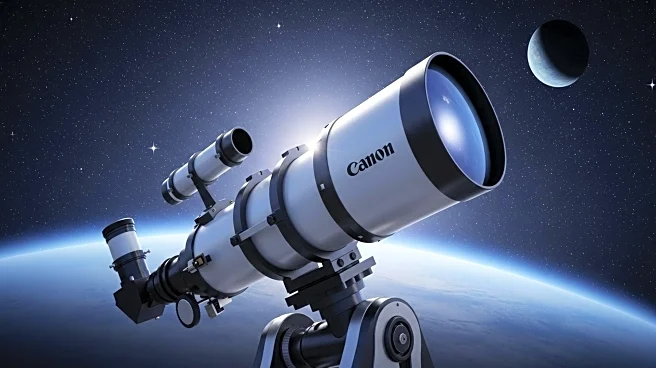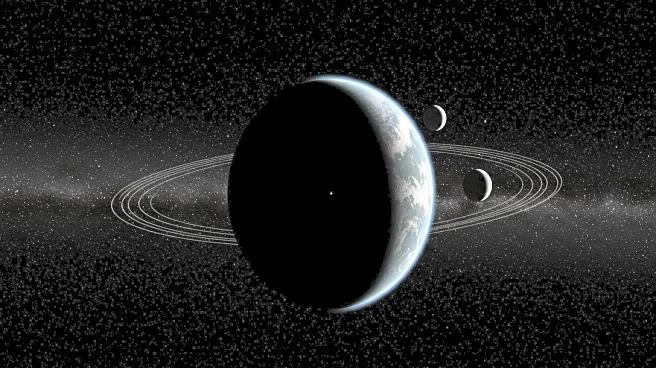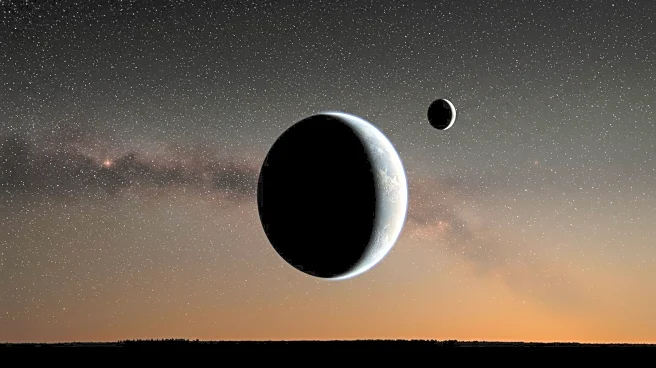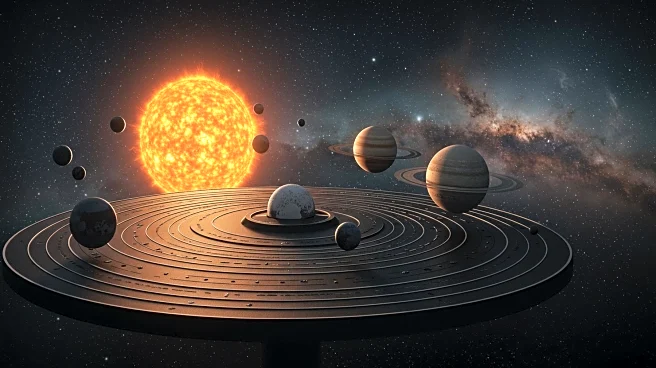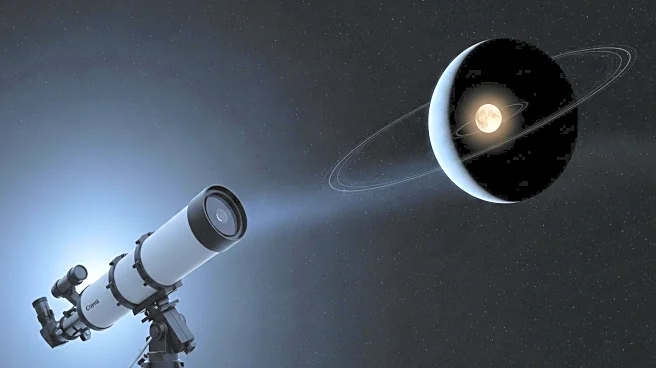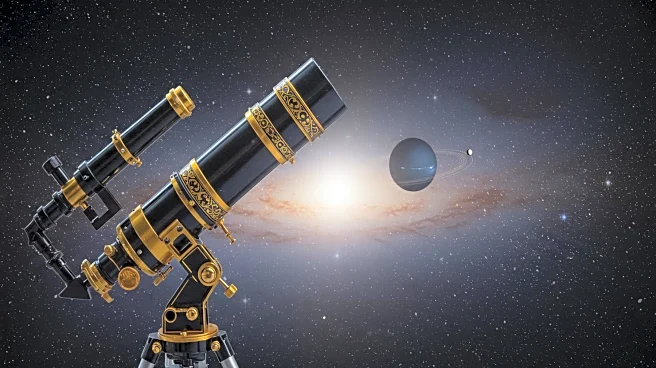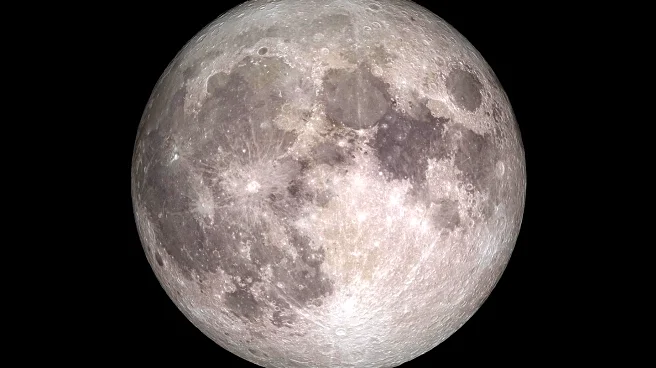What's Happening?
A new moon, approximately the size of San Angelo, has been discovered orbiting Uranus. The discovery was made on February 2, 2025, and announced in August 2025. Kenneth Carrell, Planetarium Director at Angelo State University, provided insights into the discovery, noting the remarkable capability of the James Webb Telescope to identify such a small object from a distance of two billion miles. The moon, currently designated as S/2025 U1, is about six miles across and orbits Uranus at a distance of 35,000 miles from the planet's center. This discovery adds to the growing list of moons identified in the solar system, facilitated by advancements in telescope technology.
Why It's Important?
The discovery of S/2025 U1 highlights the ongoing advancements in astronomical technology, particularly the capabilities of the James Webb Telescope. This finding contributes to the understanding of the solar system's dynamics and the formation of celestial bodies. The identification of new moons can provide insights into the gravitational interactions and history of planets like Uranus. Additionally, the naming convention for Uranus' moons, based on characters from Shakespeare and Alexander Pope, reflects cultural influences in scientific nomenclature. The discovery may influence future research and exploration missions targeting the outer planets.
What's Next?
The International Astronomical Union (IAU) will decide on an official name for the newly discovered moon, following confirmation of its status as a satellite. Continued observations and studies may reveal more about the moon's characteristics and its interaction with Uranus. The James Webb Telescope is expected to continue its mission, potentially discovering more celestial bodies in the solar system. This could lead to further scientific inquiries and exploration initiatives aimed at understanding the outer planets and their moons.
